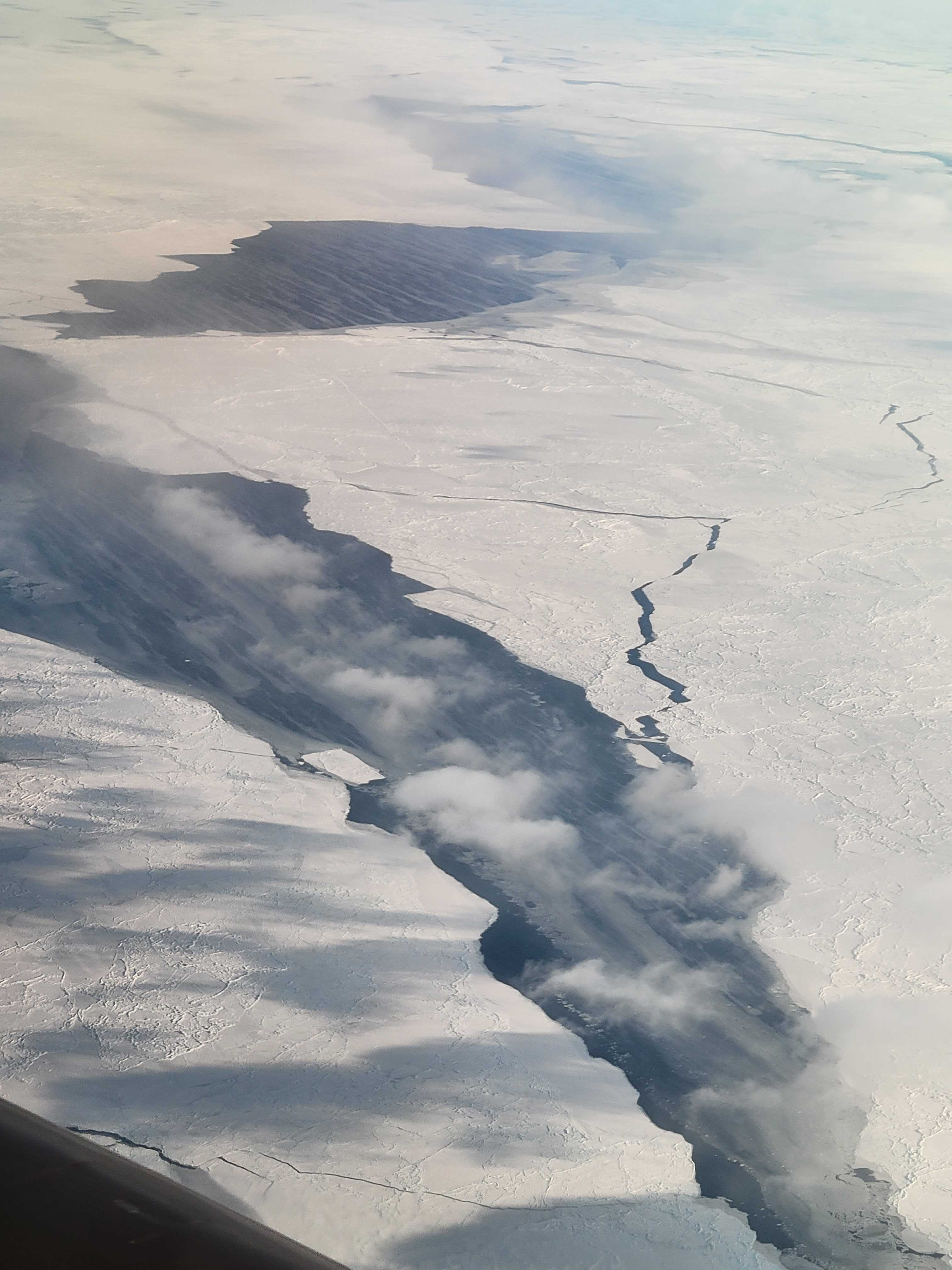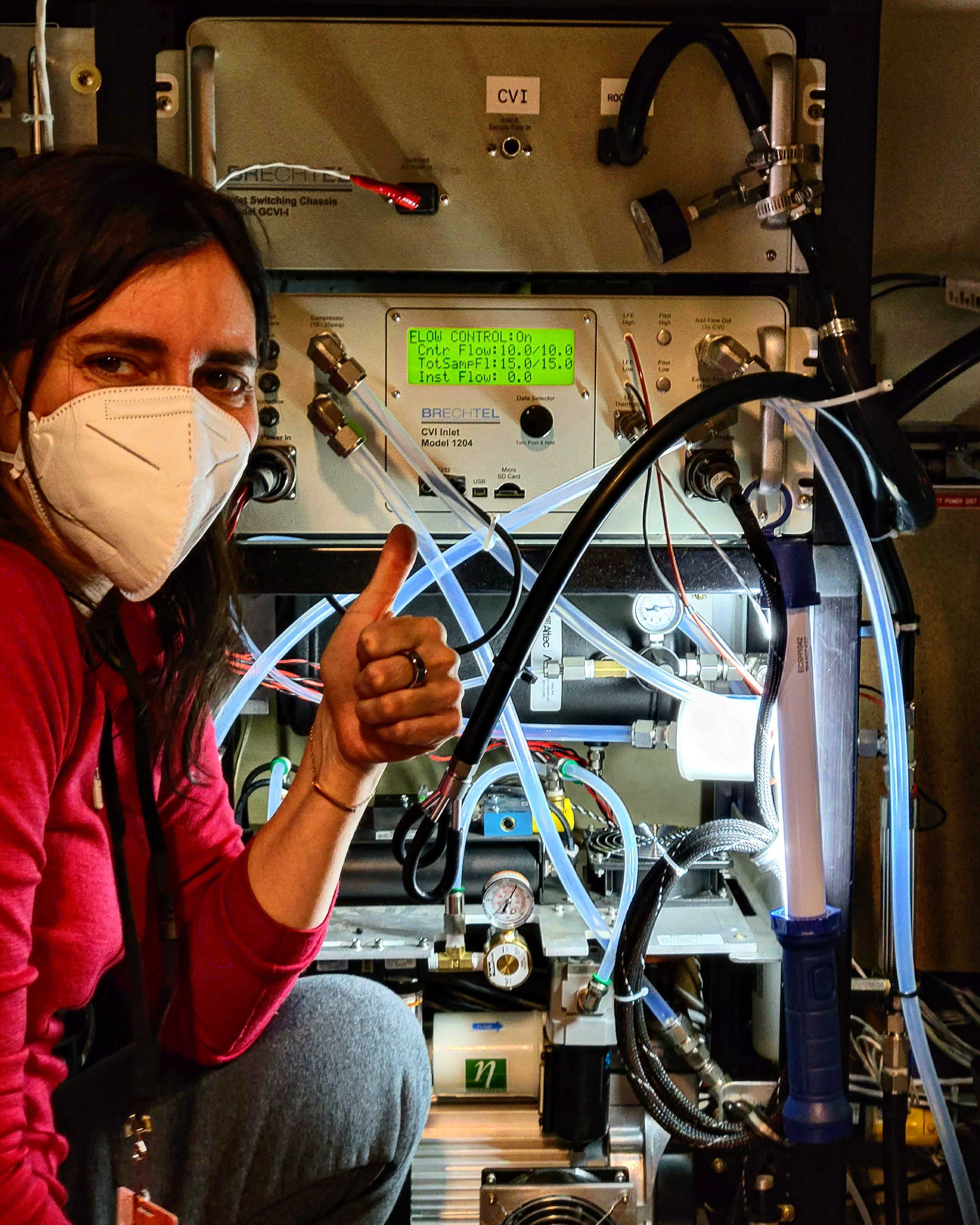5 Questions with Faculty: Sara Lance

ALBANY, N.Y. (May 5, 2022) – University at Albany atmospheric scientist Sara Lance is no stranger to conducting research high up in the clouds.
Lance, a research associate at the Atmospheric Sciences Research Center (ASRC), is the leader of the cloud water chemistry research team at ASRC’s Whiteface Mountain Field Station, located at about 5,000 feet above sea level. Her team has been collecting and analyzing cloud water samples from atop the summit for the last five years, a project funded by the New York State Energy Research and Development Authority through its Environmental Research Program.
This year, Lance took a short break from her Whiteface research to join the Chemistry in the Arctic: Clouds, Halogens, and Aerosols (CHACHA) team. The collaborative field project, funded by the National Science Foundation, aims to improve the understanding of atmospheric chemistry that impacts ozone, particulate matter and cloud chemical composition in the context of the Arctic region’s rapidly changing climate.
Lance spent several weeks collecting data in the Arctic during the spring semester. We caught up with her to learn more about the project.
Why did you decide to get involved with CHACHA?

My Co-PIs, who had all worked together previously, invited me to participate in CHACHA with them. They are world experts in halogen chemistry but felt that they would benefit from my expertise in cloud microphysics and aerosol-cloud interactions.
I participated in an airborne field campaign in the Arctic when I was a postdoc at NOAA and am intrigued by the persistence and prevalence of mixed-phase clouds low over the sea ice. These clouds contain both liquid cloud droplets and ice particles, which is a thermodynamically unstable condition. Through CHACHA, I wanted to learn more about the chemistry taking place within them.
How did the Artic conditions compare to Whiteface Mountain?
The clouds we targeted were very low over the Arctic Ocean and originated from leads, which are cracks in the sea ice. Because of this, our hypothesis is that they are highly influenced by sea spray emissions. This is a contentious issue. Some people believe that even though cracks in the sea ice can be so large they can be easily seen from space, they are only a minor source of sea salt aerosol to the lower Arctic atmosphere. But, before CHACHA, no one had collected samples low over these cracks to determine the chemistry of the aerosols and cloud droplet residuals. The North Slope of Alaska is also a major host of oil and gas infrastructure.
By contrast, Whiteface Mountain is a high elevation site in the Adirondack Mountains, so it does not receive much sea spray or oil and gas emissions. The region is instead influenced by biogenic (tree) emissions, wildfire smoke and aged anthropogenic emissions from across the U.S.

Why is this project important?
Fundamental atmospheric chemistry research is important for discovering new atmospheric phenomena. In the Arctic, bromine and chlorine radicals react with pollutants in the air. This halogen chemistry can result in widespread ozone depletion events, which were observed several times during our CHACHA campaign. Since ground-level ozone is an important greenhouse gas, understanding what causes ozone depletion events in the Arctic is important for predicting climate change. Halogens also interact with pollution like methane, mercury and sulfur dioxide. One of our research goals is to evaluate how halogens react with pollution plumes coming from the Arctic oil fields, and better understand their chemical reaction in aerosols and cloud droplets, which can impact how far halogens are transported vertically and horizontally in the atmosphere.
What are the next steps?
While many of our measurements were obtained in real-time, providing critical feedback about the conditions encountered during CHACHA, analyzing the chemical composition of the aerosol and cloud droplet residual samples collected in the field is only just beginning. Understanding the multiphase chemistry behind the gas, particulate and cloud chemical and physical properties observed will require close examination of these datasets altogether, alongside remote sensing data and chemical box modeling results.
What advice do you have for students who are interested in your field of work?
The general advice I would give is to ask questions, do not be afraid to try new things, keep your eyes open, and plan to work hard. While opportunities like CHACHA do not come around every day, there are many opportunities for students to participate in field projects across the globe every year. Field work is very challenging, but also very rewarding.




